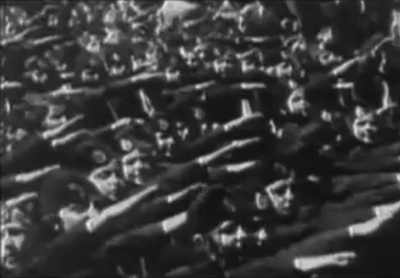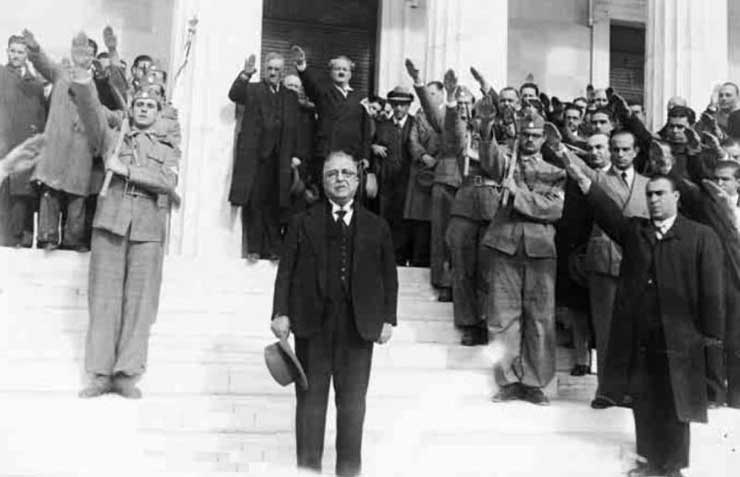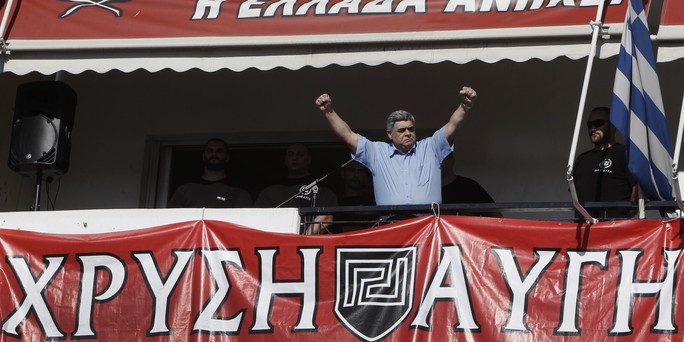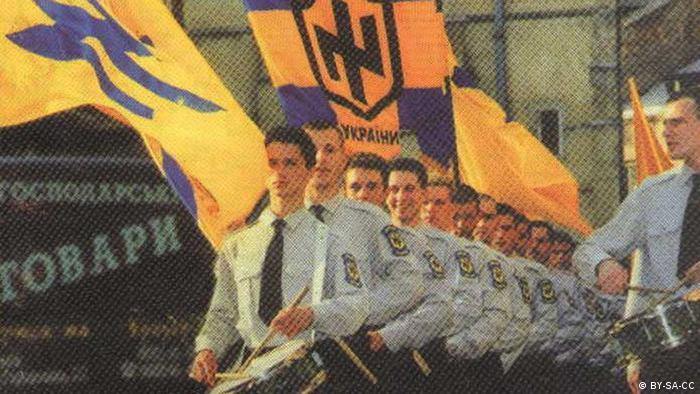Witz des Tages
Ja, weil Männerliebe nicht reingepasst hat und Ihr sowieso 500 Jahre lang nach den Türken springen musstet.
Der ist krank im kopf, man befreit ein Gebiet einer anderen Nationalität wtf? nennt er das befreien?
Houses and whole villages reduced to ashes, unarmed and innocent populations massacred en masse, incredible acts of violence, pillage and brutality of every kind — such were the means which were employed and are still being employed by the Serbo-Montenegrin soldiery, with a view to the entire transformation of the ethnic character of regions inhabited exclusively by Albanians.[SUP]
[1][/SUP]
...the horrors actually began as soon as we crossed the old frontier. By five p.m. we were approaching Kumanovo. The sun had set, it was starting to get dark. But the darker the sky became, the more brightly the fearful illumination of the fires stood out against it. Burning was going on all around us. Entire Albanian villages had been turned into pillars of fire... In all its fiery monotony this picture was repeated the whole way to Skopje... For two days before my arrival in Skopje the inhabitants had woken up in the morning to the sight, under the principal bridge over the Vardar- that is, in the very centre of the town- of heaps of Albanian corpses with severed heads. Some said that these were local Albanians, killed by the
komitadjis [
cjetniks], others that the corpses were brought down to the bridge by the waters of the Vardar. What was clear was that these headless men had not been killed in battle.

 The New York Times
The New York Times, 31.December 1912.
[h=3]Pristina[/h] During the attack of Serbian army on Pristina in October 1912, the Albanians (led by Turkish officers) abused the
white flag on the city fortress, and this way killed many Serbian soldiers.[SUP]
[5][/SUP] Then came the brutal retaliation of the Serbian army. Reports said that immediately upon entering the city, the Serbian army began hunting the Albanians and created a bloodshed by decimating the Albanian population of Pristina.[SUP]
[2][/SUP]
The number of Albanians of Pristina killed in the early days of the Serbian government is estimated at 15,000.
[h=3]Ferizoviç/Uroševac[/h] Once Ferizoviç (present-day
Ferizaj) fell to Serbia, the local Albanian population gave a determined resistance. According to some reports, the fight for the city lasted three days.[SUP]
[2][/SUP] After the fall of the city to the Serbian Army, the Serbian commander ordered the population to go back home and to surrender the weapons. When the survivors returned, between 300-400 people were massacred.[SUP]
[2][/SUP] Then followed the destruction of Albanian-populated villages around Ferizaj.[SUP]
[9][/SUP]
[h=3]Yakova/Đakovica[/h] Yakova (present-day
Gjakova) was mentioned among the cities that suffered at the hands of the Serbian-Montenegrin army. The New York Times reported that people on the
gallows hung on both sides of the road, and that the way to Yakova became a "gallows alley."[SUP]
[8][/SUP] In the region of Yakova, the Montenegrin police-military formation
Kraljevski žandarmerijski kor, known as krilaši, committed many abuses and violence against the Albanian population.[SUP]
[10][/SUP]
In Gjakova, Serbian priests carried out a violent conversion of Albanian
Catholics to
Serbian Orthodoxy.[SUP]
[11][/SUP] Vienna
Neue Freie Presse (20 March 1913) reported that Orthodox priests with the help of military force converted 300 Gjakova Catholics to the Orthodox faith, and that
Franciscan Pater Angelus, who refused to renounce his faith, was tortured and then killed with
bayonets. The History Institute in Pristina has claimed that Montenegro converted over 1,700 Albanian Catholics in the Serbian Orthodox faith in the area of Đakovica in March 1913.[SUP]
[12][/SUP]
[h=3]Prizren[/h] After the Serbian army achieved control over the city of
Prizren, it imposed repressive measures against the Albanian civilian population. Serbian detachments broke into houses, plundered, committed acts of violence, and killed indiscriminately.[SUP]
[2][/SUP] Around 400 people were "eradicated" in the first days of the Serbian military administration.[SUP]
[2][/SUP] During those days bodies were lying everywhere on the streets. According to witnesses, during those days around Prizren lay about 1,500 corpses of Albanians.[SUP]
[5][/SUP] Foreign reporters were not allowed to go to Prizren.[SUP]
[5][/SUP] After the operations of the Serbian military and paramilitary units, Prizren became one of the most devastated cities of the
Kosovo vilayet and people called it "the Kingdom of Death".[SUP]
[5][/SUP] Eventually, General
Božidar Janković forced surviving Albanian leaders of Prizren to sign a statement of gratitude to the Serbian king
Peter I Karađorđević for their
liberation.[SUP]
[5][/SUP] It is estimated that 5,000 Albanians was massacred in the area of Prizren.[SUP]
[5][/SUP]
[h=3]Luma[/h] When General Janković saw that the Albanians of Luma would not allow Serbian forces to continue the advance to the Adriatic Sea, he ordered the troops to continue their brutality.[SUP]
[2][/SUP] The Serbian army massacred an entire population of men, women and children, not sparing anyone, and burned 27 villages in the area of Luma.[SUP]
[5][/SUP] Reports spoke of the atrocities by the Serbian army, including the burning of women and children bound to stacks of hay, within the sight of their fathers.[SUP]
[2][/SUP] Subsequently, about 400 men from Luma surrendered to Serbian authorities, but were taken to
Prizren, where they were murdered.[SUP]
[2][/SUP] The
Daily Telegraph wrote that "all the horrors of history have been outdone by the atrocious conduct of the troops of General Jankovic".[SUP]
[2][/SUP]
The second Luma massacre was committed the following year (1913). After the London Ambassador Conference decided that Luma should be within the Albanian state, the Serbian army initially refused to withdraw. Albanians raised a great rebellion in September 1913, after which Luma once again suffered harsh retaliation from the Serbian army. A report of the International Commission cited a letter of a Serbian soldier, who described the punitive expedition against the rebel Albanians:[SUP]
[1][/SUP]
"My dear Friend, I have no time to write to you at length, but I can tell you that appalling things are going on here. I am terrified by them, and constantly ask myself how men can be so barbarous as to commit such cruelties. It is horrible. I dare not tell you more, but I may say that Luma (an Albanian region along the river of the same name), no longer exists. There is nothing but corpses, dust and ashes. There are villages of 100, 150, 200 houses, where there is no longer a single man, literally not one. We collect them in bodies of forty to fifty, and then we pierce them with our bayonets to the last man. Pillage is going on everywhere. The officers told the soldiers to go to Prizren and sell the things they had stolen."
Italian daily newspaper
Corriere delle Puglie wrote in December 1913 about official report that was sent to the Great Powers with details of the slaughter of Albanians in Luma and
Debar, executed after the proclamation of the amnesty by Serbian authorities. The report listed the names of people killed by Serbian units in addition to the causes of death: by burning, slaughtering, bayonets, etc. The report also provided a detailed list of the burned and looted villages in the area of Luma and Has.[SUP]
[13][/SUP]
[h=2]Leo Trotsky's article[/h]
Leo Trotsky, one of the leading figures of the Russian revolution, was sent as a journalist to cover Balkan Wars in Serbia, Bulgaria and Romania. In his report sent to Kiev newspaper
Kievskaya Misl he writes about many "atrocities committed against the Albanians of Macedonia and Kosovo in the wake of the Serb invasion of October 1912".[SUP]
[14][/SUP] Among other instances he tells a shocking case of drunken Serbian soldiers torturing two young Albanians.
"Four soldiers held their bayonets in readiness and in their midst stood two young Albanians with their white felt caps on their heads. A drunken sergeant – a komitadji – was holding a kama (a Macedonian dagger) in one hand and a bottle of cognac in the other. The sergeant ordered: ‘On your knees!’ (The petrified Albanians fell to their knees. ‘To your feet!’ They stood up. This was repeated several times. Then the sergeant, threatening and cursing, put the dagger to the necks and chests of his victims and forced them to drink some cognac, and then… he kissed them...", shows an excerpt from the report.
[TABLE="class: cquote2, align: center"]
[TR]
[TD="width: 20, align: left"]“[/TD]
[TD]We have carried out the attempted
premeditated murder of an entire nation. We were caught in that criminal act and have been obstructed. Now we have to suffer the punishment.... In the Balkan Wars, Serbia not only doubled its territory, but also its external enemies.[SUP]
[18][/SUP][/TD]
[TD="width: 20, align: right"]”[/TD]
[/TR]
[TR]
[TD] [/TD]
[TD]
[/TD]
[/TR]
[/TABLE]












